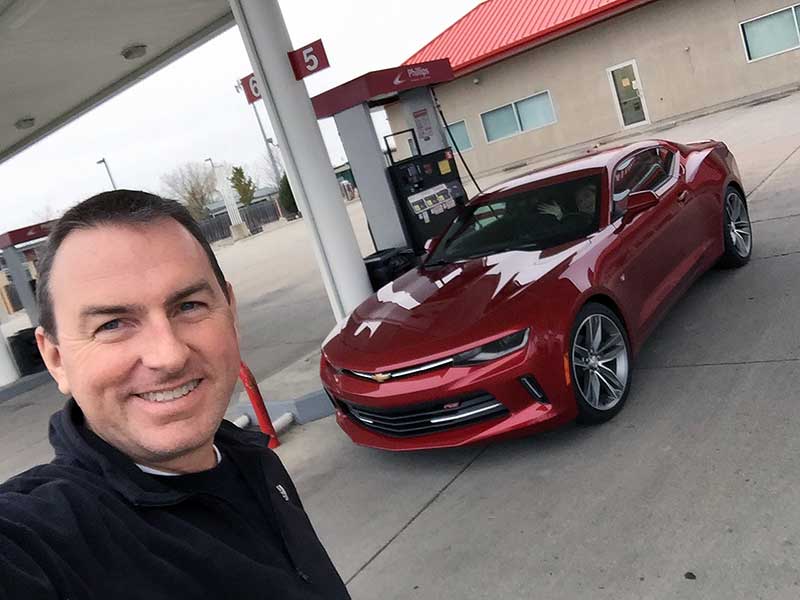Recent Articles
Popular Makes
Body Types
8 Things We Learned About the 2016 Chevrolet Camaro While Finding New Roads
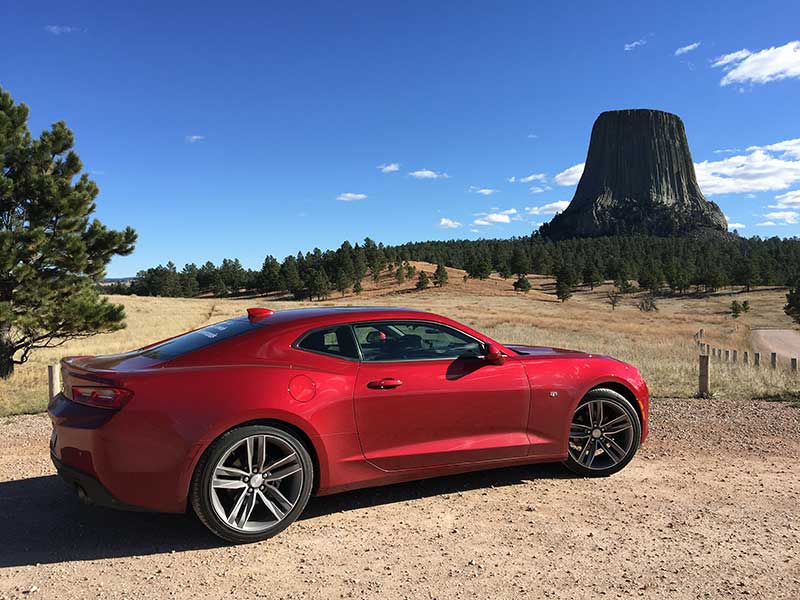
2016 Chevrolet Camaro at Devils ・ Photo by Michael Harley
“Find new roads,” said the representative from Chevrolet as he offered us the opportunity to drive an all-new 2016 Chevrolet Camaro between two major cities of our choosing. Without a moment’s hesitation, we chose Minneapolis and Salt Lake City — a pair of Midwestern cities with lots of wide open spaces between.
With the keys to a Garnet Red V6 Coupe 6-speed in our hands, we plotted a circuitous route that first took us to Fargo, North Dakota. After a brief tour, we headed southwest towards Mt. Rushmore in South Dakota and Devil’s Tower National Monument in Wyoming. Finally, after three days of uneventful driving, we arrived on the shores of the Great Salt Lake.
We added 1,589 miles to the odometer of the two-door Camaro. In the process, we learned quite a bit about Chevrolet’s newest sports car.
The exterior styling is eye-catching and fresh, yet unmistakable.
Think evolutionary, not revolutionary, when describing the sculpted exterior of the all-new sixth-generation Chevrolet Camaro. Compared to its predecessor, the 2016 model is still generally the same size and shape, but the folds and creases in its sheet metal are crisp, bold and decidedly more aggressive. Most notable is the new front fascia, which cleanly incorporates today’s obligatory daytime running lights. Chevrolet went out of its way to ensure that its all-new sixth-generation Camaro would be instantly recognizable on the road — and its efforts paid off. Everyone, including your neighbor who knows absolutely nothing about cars, will be able to identify the 2016 model as nothing other than a Camaro.
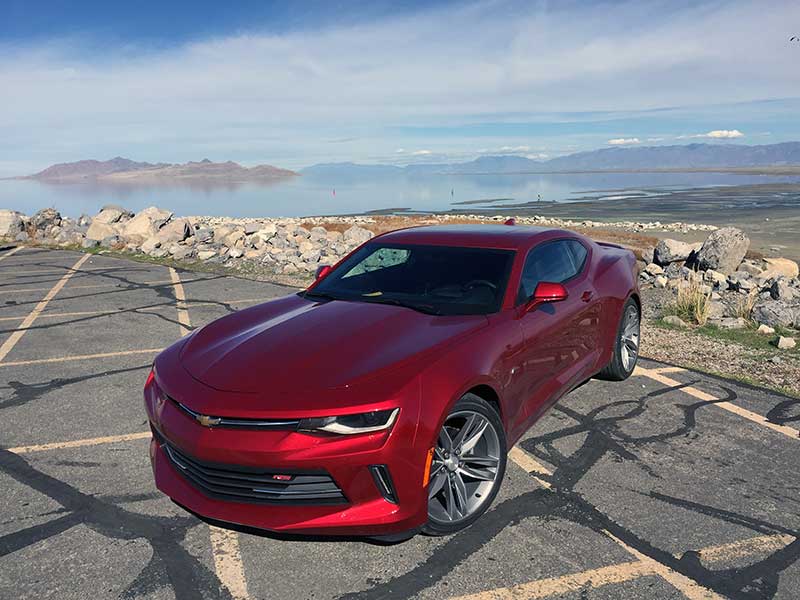
Photo by Michael Harley
The all-new chassis is very rigid and lightweight.
Every component on this modern vehicle is bolted or bonded to the platform — the vehicle’s chassis or framework. Vehicles with a flexible foundation squeak and rattle over bumps and their suspension has to work twice as hard to keep the wheels firmly on the ground.
Rather than refresh last year’s platform, Chevrolet went into GM’s parts bin and selected its Alpha component set, which is used on the premium Cadillac ATS and Cadillac CTS. Carefully re-engineered for use in the two-door sports car, it incorporates aluminum alloy in the suspension, dashboard, and hood to ensure mass remains low — the new V6 Camaro is more than 300 pounds lighter than the 2015 model.
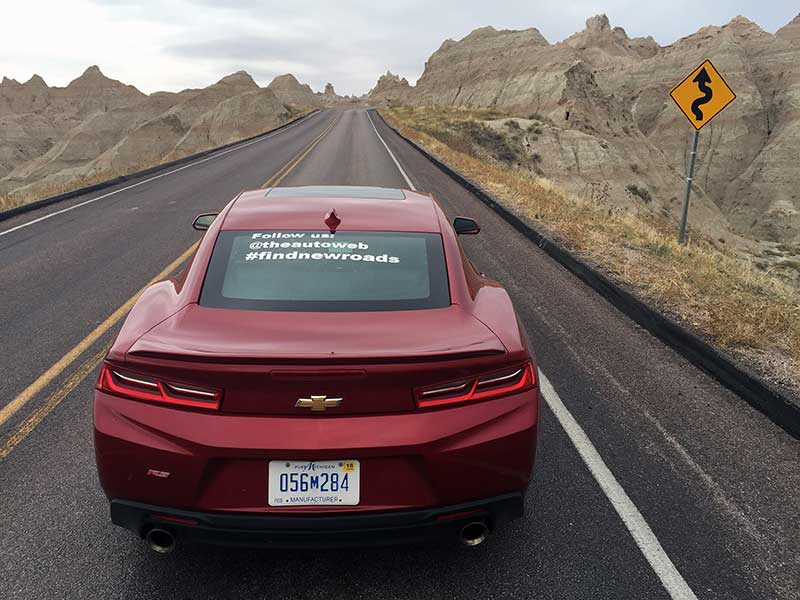
Photo by Michael Harley
The back seats are nearly unusable for passengers.
It is best to think of the all-new Camaro as a 2+2, which means its second row of seats are only suitable for small children. Occupants who are able to shoehorn their legs behind the two front bucket seats, and drop their derrieres into the rear passenger compartment, will find conditions cramped and claustrophobic — the rear windows are small and the view to the outside world is challenged. The Camaro was never designed to be a family car, and the sixth-generation design doesn’t break any new ground on that front.
On a positive note, the unoccupied seats fold forward to allow large items to be carried or transported in the trunk, which is unexpectedly roomy.
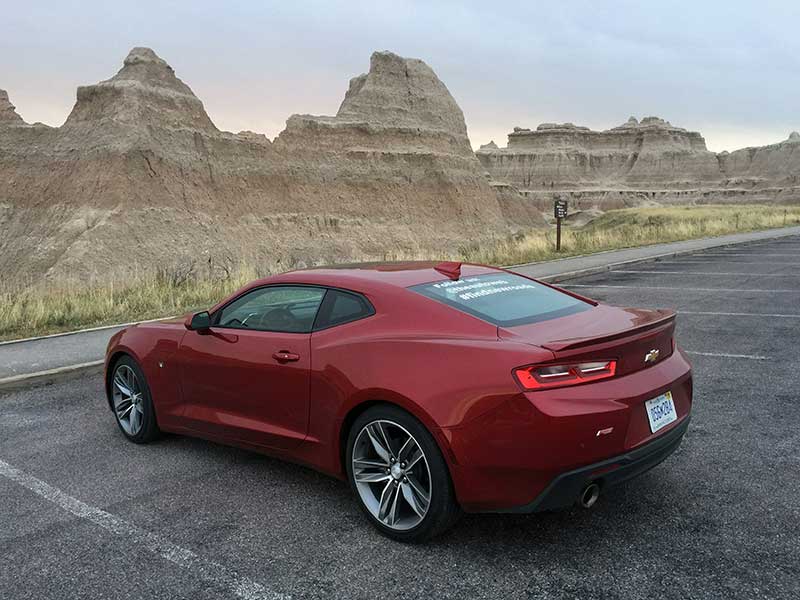
There is very little storage within the passenger cabin.
Styling was a big deal to the Camaro team, and it shows within the passenger cabin. The primary instrument cluster is easy to read, the climate controls are innovative, and the fit and finish is the best yet. Unfortunately, there is one big thing lacking — storage.
The door pockets are shallow and thin, making them nearly useless, and there is zero storage in front of the shifter at the base of the center console. The Camaro is offered with an inductive mobile phone charger, but it is located behind the armrest — it is an ungainly stretch to reach any device put on that small shelf. The only positive in terms of storage are the two cup holders, arranged in series on the center console — they reliably hold a couple of soda cans firmly in place.

Photo by Michael Harley
It has excellent high-speed stability and steering feel.
With a general lack of traffic and wide open spaces, velocities are high in the Dakotas — the speed limit on many highways is 80 mph — meaning most of our drive was done at speeds much higher than those in our home state of California. Many vehicles are out of their comfort zone as they approach triple digits, but not the all-new 2016 Chevrolet Camaro — it is rock stable.
The steering utilizes a new electronically assisted power steering rack, which replaces the previous generation’s hydraulic unit, to save fuel and offer variable resistance. While some automakers are still trying to deliver road feel through the new electronically assisted systems, the steering on the Camaro is nicely weighed, accurate, and it delivers enthusiast-pleasing levels of feedback and stability.
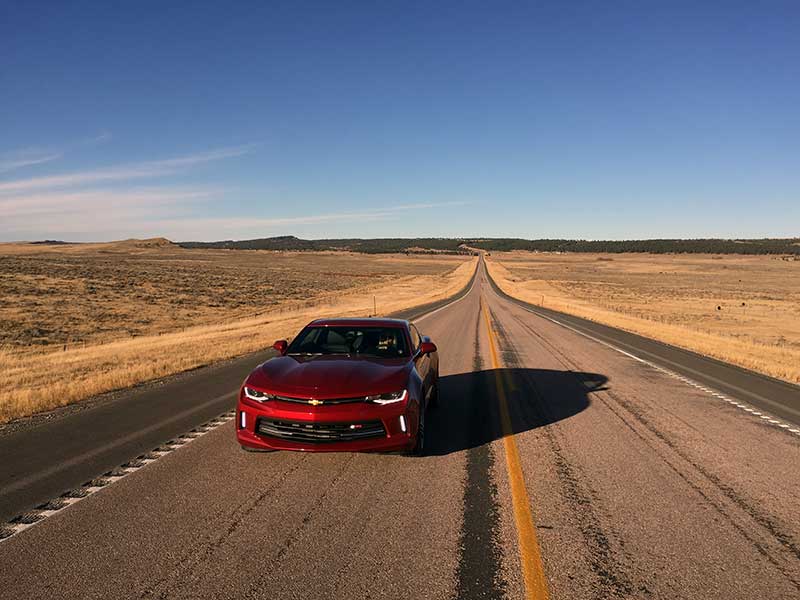
Choose any engine, as long as it isn’t the V6.
Chevrolet has launched the Camaro with a choice of three engines: turbocharged 2.0-liter inline-4 (275 horsepower/295 lb-ft of torque), naturally aspirated 3.6-liter V6 (335 horsepower/284 lb-ft of torque), and a 6.2-liter V8 (455 horsepower/455 lb-ft of torque).
We put nearly 1,700 miles on a V6-equipped model (with a 6-speed manual gearbox) and were left unimpressed. Despite its impressive on-paper output, and an eye-opening published 0-60 time of 5.2 seconds, it offered lackluster real-world acceleration at high speed in the tallest gears — especially at higher altitudes. Our recommendation is to choose the torquey turbocharged four-cylinder, which would be nearly unaffected by elevation, or the brawny V8, which is perfectly suited for the Camaro’s muscle-car reputation — both will deliver better fuel economy.
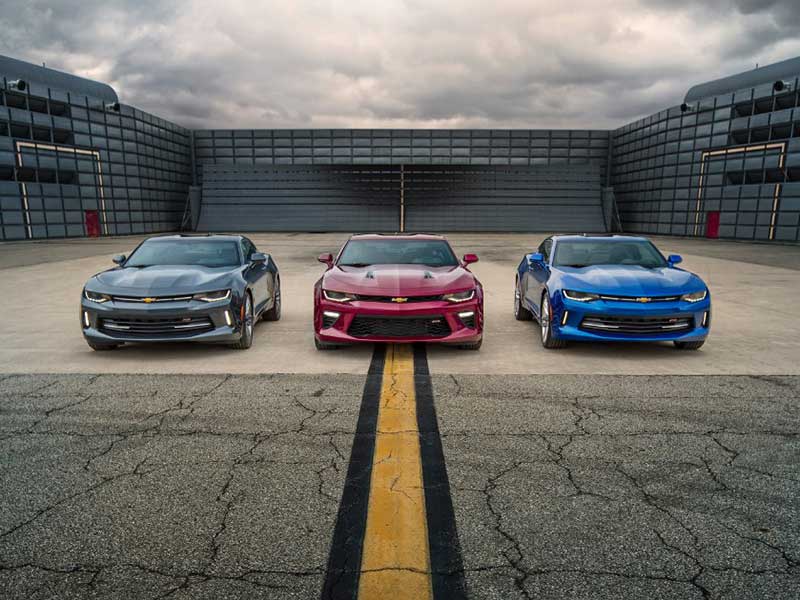
Photo by Chevrolet
The heating and air conditioning vents are brilliant.
Ditching the traditional heating, venting and air conditioning (HVAC) layout, which places the inboard vents high on the dashboard with a row of buttons beneath, Chevrolet delivered true innovation with its new climate control design. Rather than crowd the top of the console with vents, the automaker put the two main air outlets down low — inches in front of the transmission shifter — where they are able to distribute volumes of heated or cooled air to the occupants. Even better, the driver and passenger are able to control the temperature of the air by rotating the outside bezel of the vent, which is an intuitive action that doesn’t require the operator to look down at the controls — wonderful.
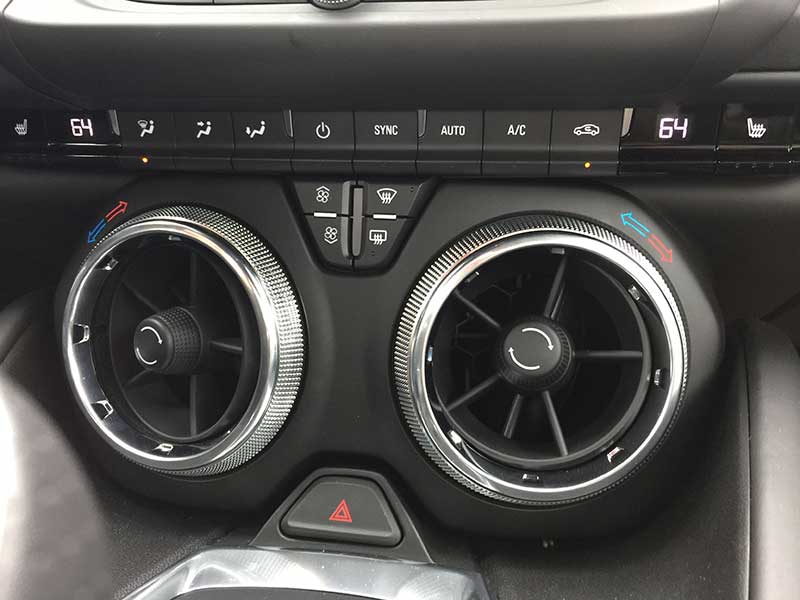
Photo by Joni Gray
It is easy to fuel — infrequently.
Chevrolet has removed the gasoline cap from its all-new Camaro, which improves convenience and reduces the amount of harmful gasses released during fueling. Instead of a traditional screw-on cap, which is usually awkwardly tethered to the filler opening, a new capless system accepts a fuel nozzle effortlessly — it is now a one-handed operation.
Of course, we didn’t have to use the convenient fuel filler very often as new Camaro delivers excellent fuel economy. The turbocharged 2.0-liter inline-4 will surpass 30 mpg on the highway, while the naturally aspirated 3.6-liter V6 and the big 6.2-liter V8 — both mated to an 8-speed automatic — return an impressive 28 mpg on the open road.
